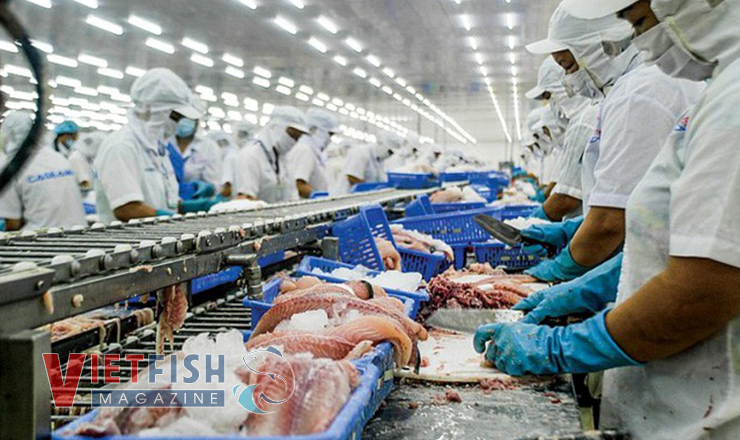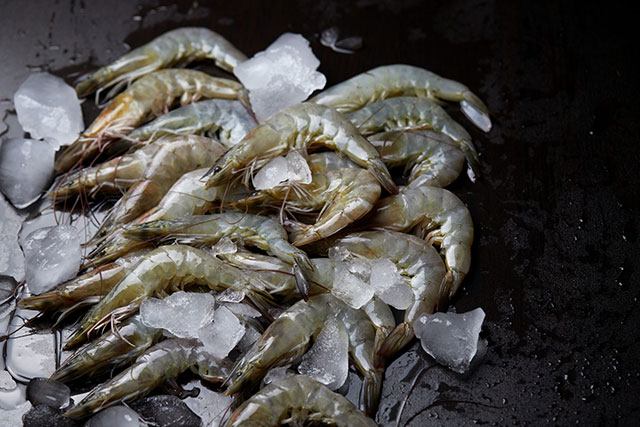Pangasius exports slow down but fulfill USD 2.4 billion target
Pangasius has been the most thriving sector in the fisheries this year, thanks to the highest average export price and more market opportunities than other sectors. As of the end of October, pangasius exports reached over USD 2.1 billion, up 77% from the same period last year, showing the all-time high level and the highest level of all the sectors in the fisheries industry.
The consumption of frozen pangasius fillet has been in an upward trend as compared to frozen/fresh whole fish. This key category accounts for 86.5% of the total pangasius export value of the year, reaching nearly USD 1.9 billion, up 79%. The value added processed pangasius accounts for 1.5% with USD 32.7 million worth.
Changes in density have been recorded in the structure of pangasius importing countries, with the role of the Chinese market being highlighted. As of late October, China has accounted for nearly 30% of Vietnam’s pangasius export value, with over USD 638 million worth. This country has made the most tremendous growth in importing pangasius, up 106%.
The US has been the second biggest importer of pangasius, but the density declined from the previous year. In the first ten months of the year, pangasius exports to the US accounted for 23% with USD 491 million worth. The 70% increase in this market was a breakthrough in the first half of the year when the inflation had not hit.
According to the US Department of Agriculture, as many as 104.5 million tons of Vietnamese pangasius were sold to the US in the first nine months, valued at USD 445 million, up 24% in volume and 91% in value as compared to the same period last year. The average importing price reached 4.26 USD/kg, up 53% from the same period last year. Of all other seafood products, the pangasius price has increased the most rapidly.
A noticeable growth was recorded in sales of Vietnamese pangasius in the EU, with an increase of 103% and a value of USD 173 million. The strong recovery of the EU made the density of this market grow from 7% to 8% in the total of Vietnam’s pangasius exports. The main destinations of Vietnamese pangasius in the EU bloc were the Netherlands (up 72%), Germany (up 182%), and Belgium (up 94%).
Vietnam saw a 32% increase in exports of pangasius to the UK, with nearly USD 55 million worth; however, the density declined from the previous year. The UK has recovered the most slowly from the Covid-19 pandemic among the G7 members; and shortly after, it suffered from the serious impact of the inflation, energy and food crisis due to the Russia – Ukraine strike which resulted in a slump in demand for seafood regardless of low or average prices.
The CPTPP bloc has remained the density of 13% of Vietnam’s pangasius exports, accounting for USD 282 million, up 74% from the same period last year. Vietnam saw revenue of USD 92 million and 50 million from Mexico and Canada respectively over the last ten months. These two markets increased their purchases of Vietnamese pangasius by 67% and 88% from the same period last year.
In spite of positive accumulated value in the first ten months, the revenue of pangasius fell in late quarter and quarter IV. Accordingly, pangasius exports just reached USD 179 million in October, the lowest level since the 2022 Tet Holiday and the slowest growth since earlier this year. Besides countries with increase in sales, some countries showed a slump in pangasius import value such as the US (down 11%), Canada (down 3%), and Colombia (down 26%).
Such signs show that the inflation is swinging the market demand, affecting the consumption of pangasius not only in the run up to the year end but also till 2023. However, Vietnam’s pangasius exports will reach a record high up to USD 2.4 billion by the end of 2022.
VFM






